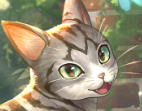Welcome to Shadowverse, an anime-inspired, digital collectible card game released in June 2016. Published by Cygames, it’s made by the same creators that brought you popular titles like Princess Connect! Re: Dive, Uma Musume, and Granblue Fantasy.
Shadowverse is enjoyed worldwide by over a million daily active players, spawning two anime series, a Nintendo Switch game, and even a thriving esports scene.
Tutorial
Once you’ve downloaded the game, you’ll want to check out the tutorial, which gives you an introduction to the main story and the basics of the game. Even if you’re a seasoned player from other card game titles, it’s worthwhile to check out the core gameplay mechanics unique to Shadowverse.
Main Screen (UI)
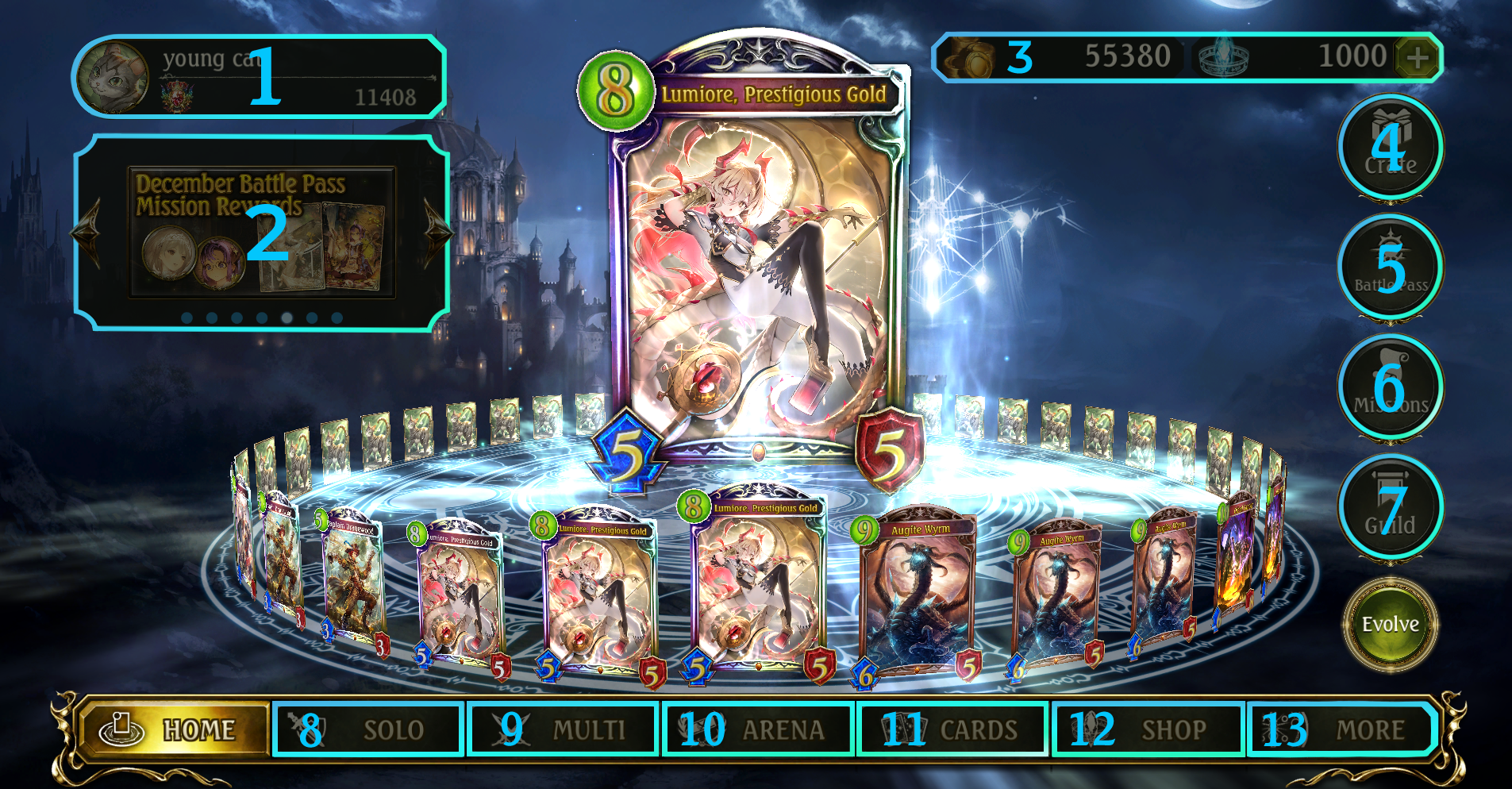
1. Profile: This section shows your user name, emblem (profile pic), and rank. Clicking inside this box will take you to your profile screen
2. News section: You can scroll between the latest announcements. Some of the polls can be accessed from this area (although you may need to log in via phone to access some polls)
3. Currency: This shows how many Rupies and Crystals you have. Rupees can be acquired by playing the game normally, whilst Crystals can only be acquired by purchasing them from the shop with real-life money.
4. Crate: Clicking here will take you directly to your new player, promotional, and tournament rewards
5. Battle pass: Clicking here will show your progress in the current Battle Pass, which will give you various currency and cosmetic rewards. You have the option of purchasing the premium battle pass here with Crystals as well.
6. Missions: Complete missions to earn free packs, rupees, and cosmetic awards. Doing daily missions is the key to maximising your in-game economy.
7. Guild: This is where you can join a guild to chat with friends and share replays
8. Solo: This is where you can access the story, puzzles, and practice against the AI. Sometimes collaboration events can be accessed here.
9. Multiplayer: This is where you can face off against other players in ranked, unranked, and private matches.
10. Arena: This is where you can face off against other players in draft modes, in-game tournaments, and other events.
11. Cards: This is where you can view your collection and build decks.
12. Shop: This is where you can purchase cosmetics, crystals, and cards using your rupies, crystals, and tickets.
13. More: Access to settings, profile, friend requests, redeeming promo codes, and setting up your account across different platforms
First Steps - Opening Your First Packs
Shadowverse starts you off with 50 free packs spread across the last five expansions. To begin, redeem your tickets from your crate, and then make your way to the Buy Cards page under the Shop.

Every card you pull from the pack is immediately usable within the Rotation format, as they come from the most recent five sets.
How Do I Get More Cards And Packs?
Fear not, Shadowverse is well known for being incredibly generous to its free-to-play players. Currency and packs are awarded just for doing your daily missions, engaging in events, and logging in. In fact, it is so generous that many professional players are completely free to play, with the exception of cosmetic items which provide no competitive advantage during gameplay.
In addition, new players have the advantage of many first-time rewards that will jumpstart their in-game economy. Over 10,000 rupies can be acquired just by doing the story mode, and 4600 rupees can be acquired just by beating the elite AI.
Shadowverse also has a crafting feature which utilises a secondary currency called Vials. Each card in the game can be liquidated to provide vials, and this currency can be utilised to create the cards which you may be missing.
For a general guide on which cards to Liquefy, visit the Vial Guide section of our website (once it's complete).
Lastly, you can earn 400 temporary gems every day for winning three matches. You can exchange 3500 of these gems for a Legendary in Rotation, further decreasing the pressure on your resources!
Recommended Priority - Let’s Start With The Story Mode!
For new players, we heavily encourage them to play the Story Mode to familiarise themselves with the gameplay and to find a playstyle that resonates with their preferences. Not only is the story mode quite interesting, especially in the latter story arcs, but you will also build your collection at the same time. Completion of the entire story can net you over 10,000 rupies, enough for 100 packs of your choice!
As for what decks to use for the story mode, you will have two main options:
- Build your own decks and experiment!
- Utilise the trial decks which will prove more than a match for even the most difficult AI battles.
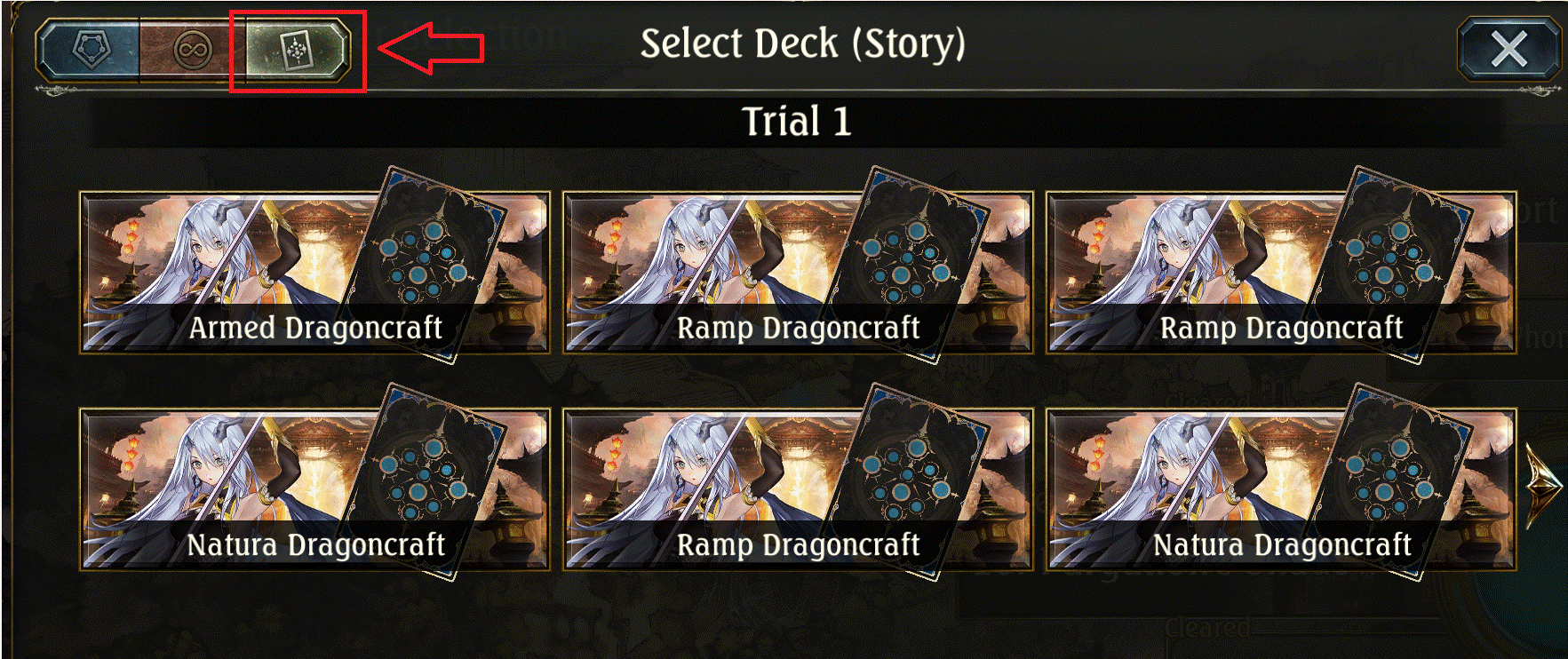
Deciding On A Class
After getting familiar with the mechanics of Shadowverse, it will be time to pick the classes you are most interested in. For a new player, it is recommended that they “main a class” first before expanding outwards. This is for two main considerations:
1) Most new players will lack the resources to build decks from multiple classes until they play for a few months
2) The story starts off very easy and only gradually ramps up in difficulty. Fortunately, you will also get better at the game while playing the story!
While we recommend picking a class that you enjoy the playstyle or aesthetics of, for those that want to build towards Tier 1 decks, check out our Tier List section. That said, keep in mind that the best classes and decks are constantly shifting with each new tournament and expansion releases.
Forestcraft
True to its namesake, this class features woodland creatures from fairies and elves, all the way through to insects and dangerous monstrosities.
Here are some of the historical concepts within the class:
- Utilisation of Fairies, which are 1 cost, 1/1 followers that can easily flood the board and overwhelm the opponent. Many Forestcraft cards can enhance the Fairies and give them additional effect
- Card effects that can “bounce” cards on the board back to hand to reuse key effects
- Card effects which are activated only after a set number of other cards have been played on the same turn.
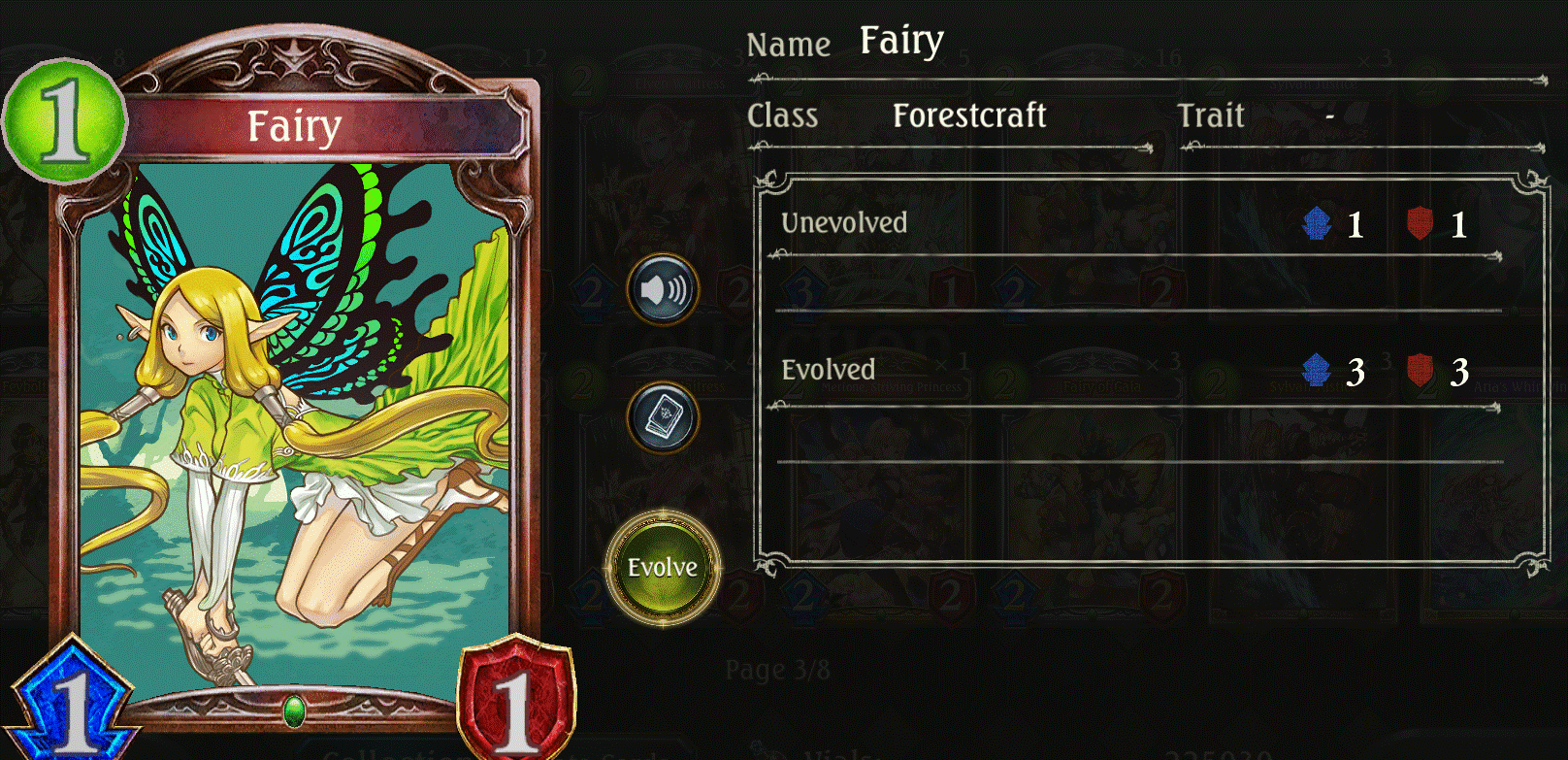
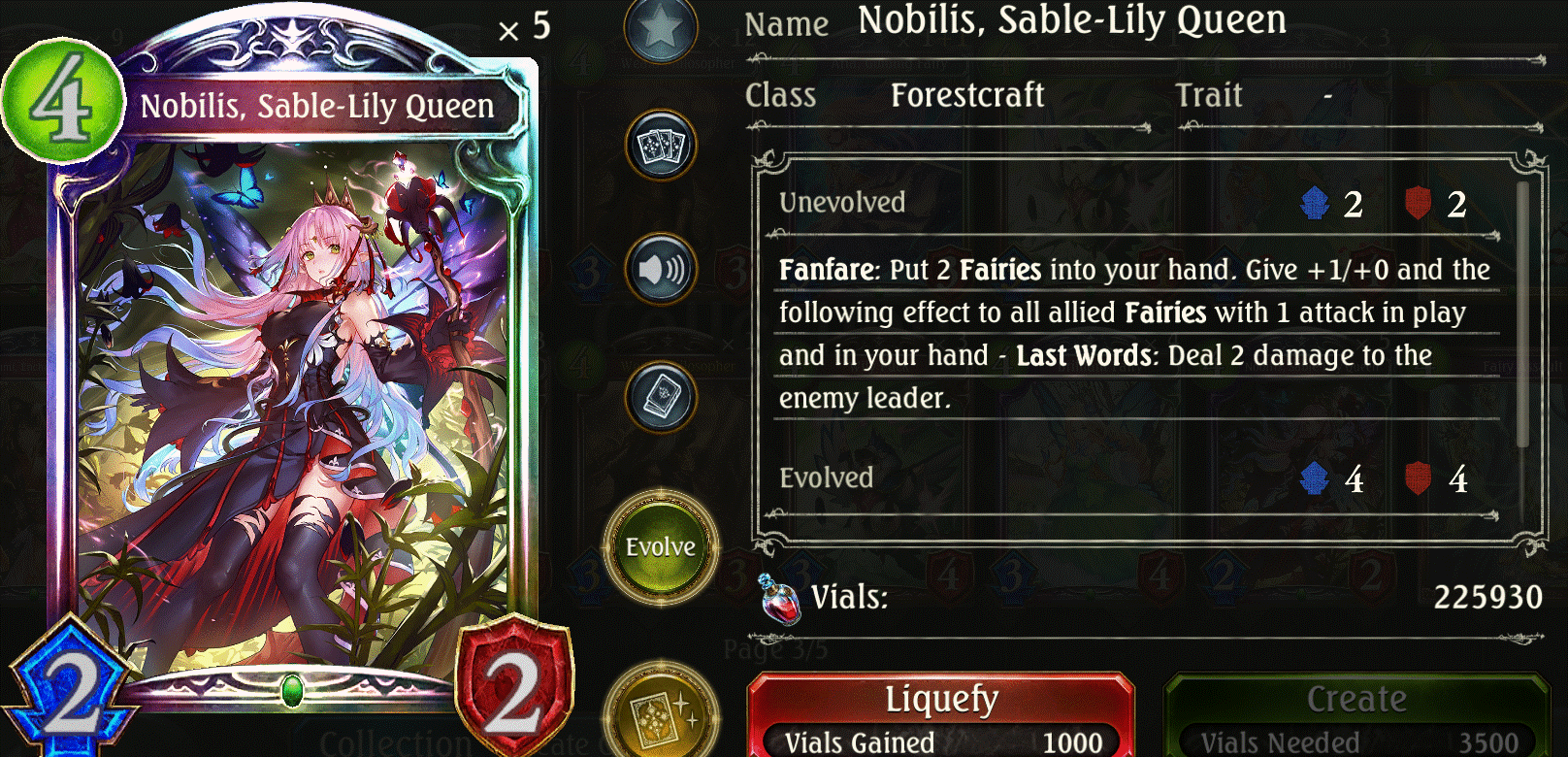
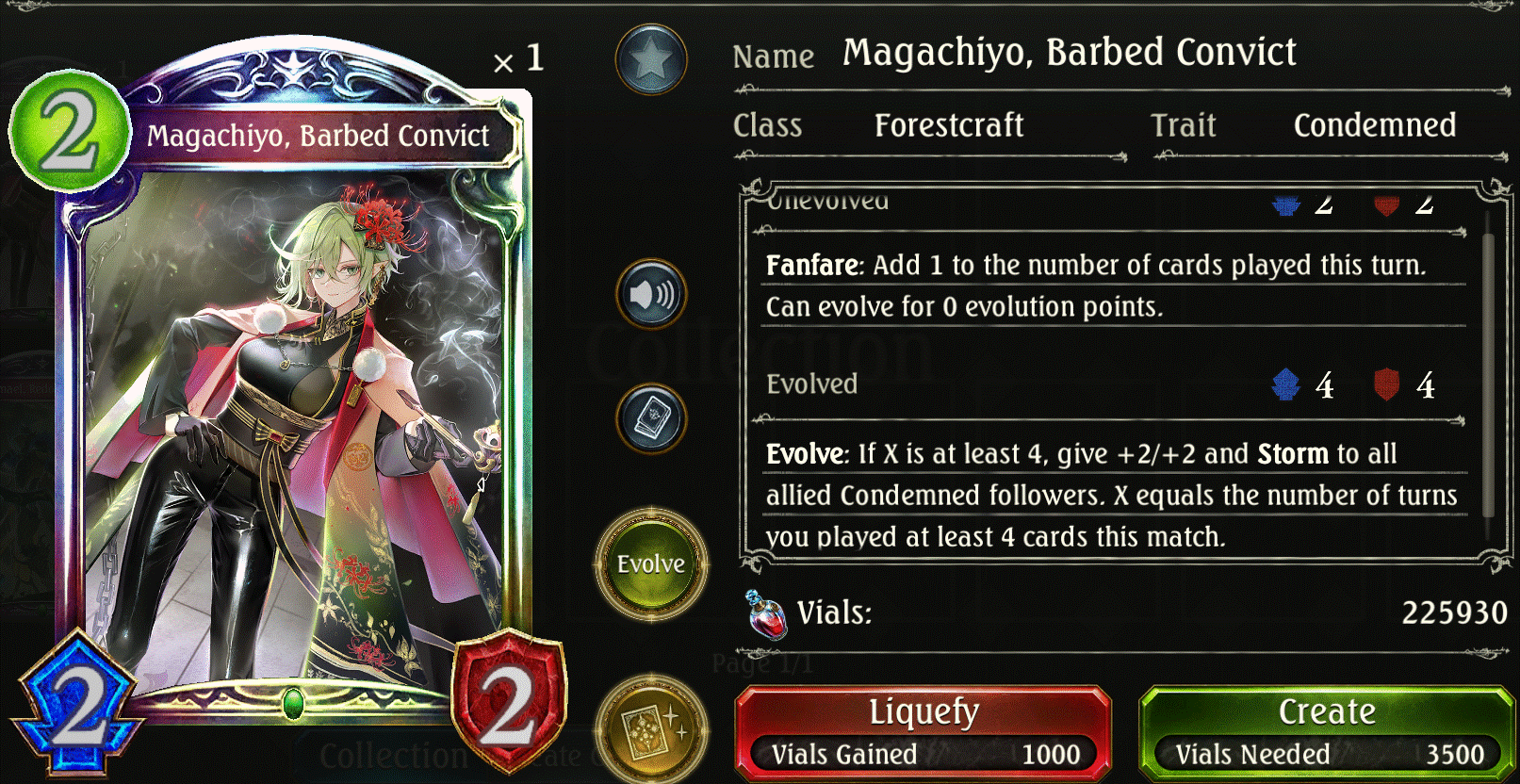
Swordcraft
Oftentimes a board-based, follower-centric class that aesthetically includes soldiers and nobility.
Here are some of the historical concepts within the class:
The followers will usually include traits, typically along the lines of Officers and Commanders which synergise with each other to create bonus effects
- Adept at taking control of the board with cost efficient followers and ability to generate token followers
- Utilises the Rally mechanic (number of followers that have come into play) to enhance the effects of their followers
- Card effects that can buff the stats of their followers, typically in conjunction with powerful storm effects that can attack the opponent’s leader directly
- Utilising loot, which are highly efficient spell tokens which can enhance the effects of powerful finishers
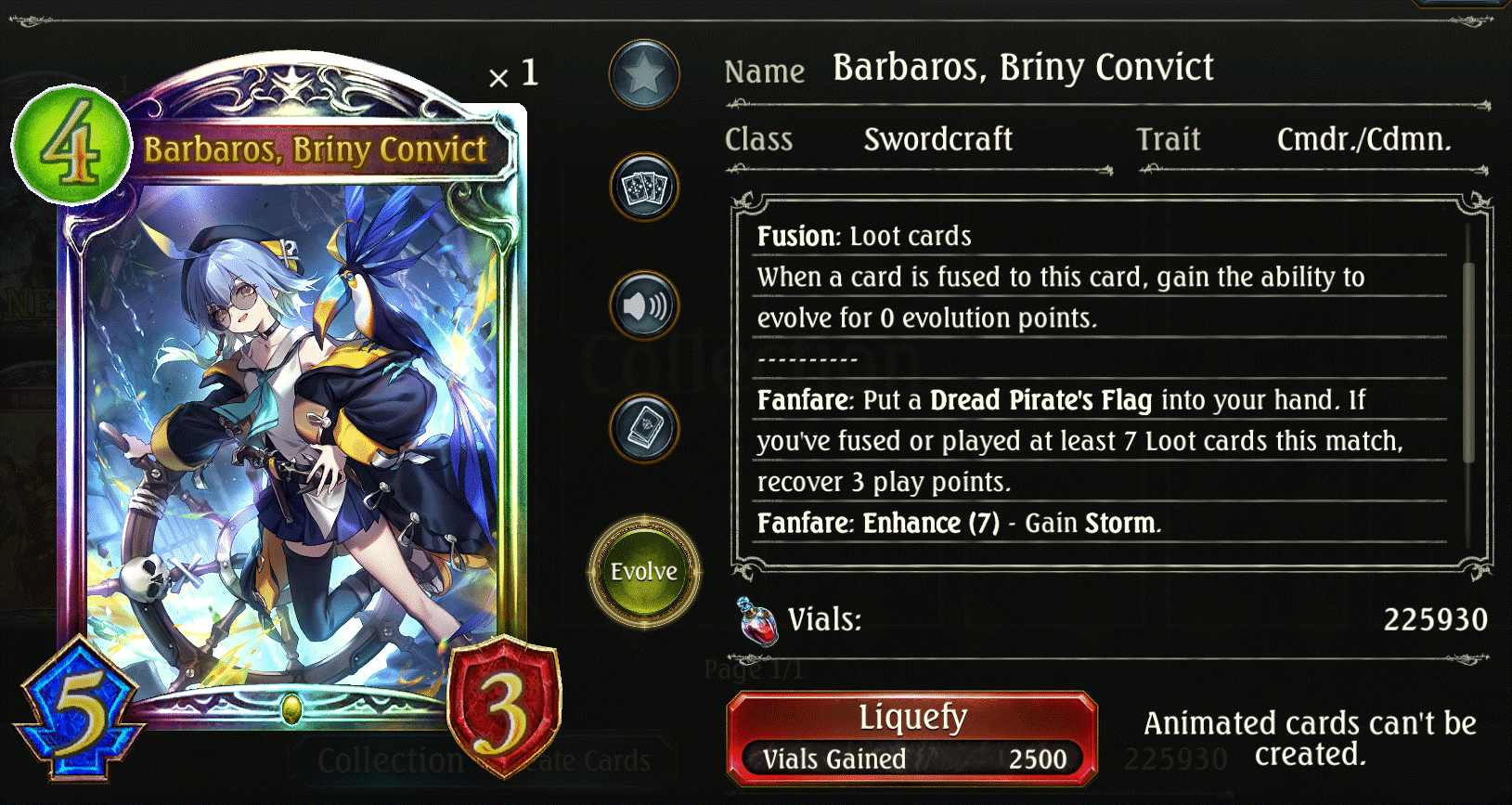
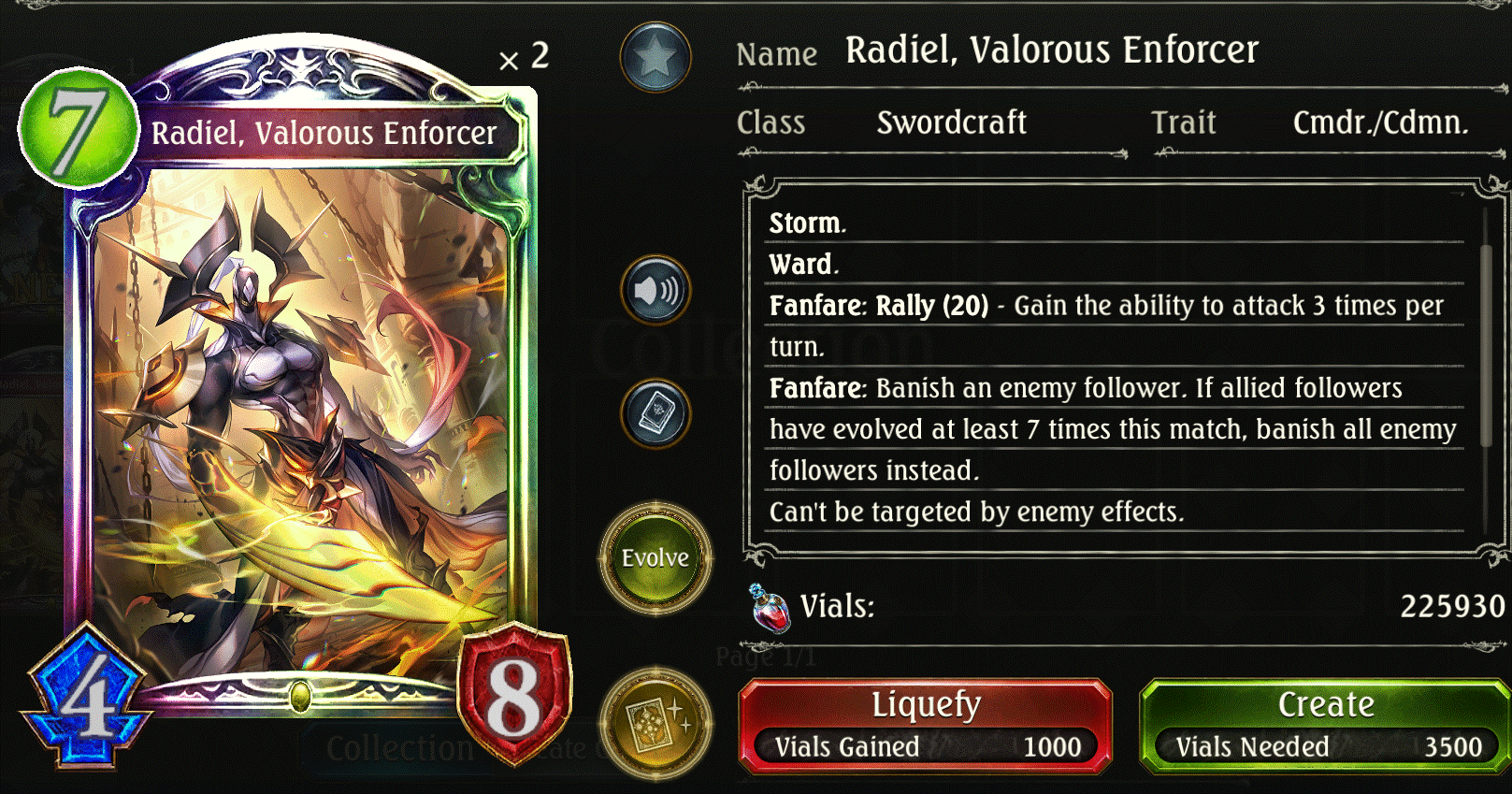
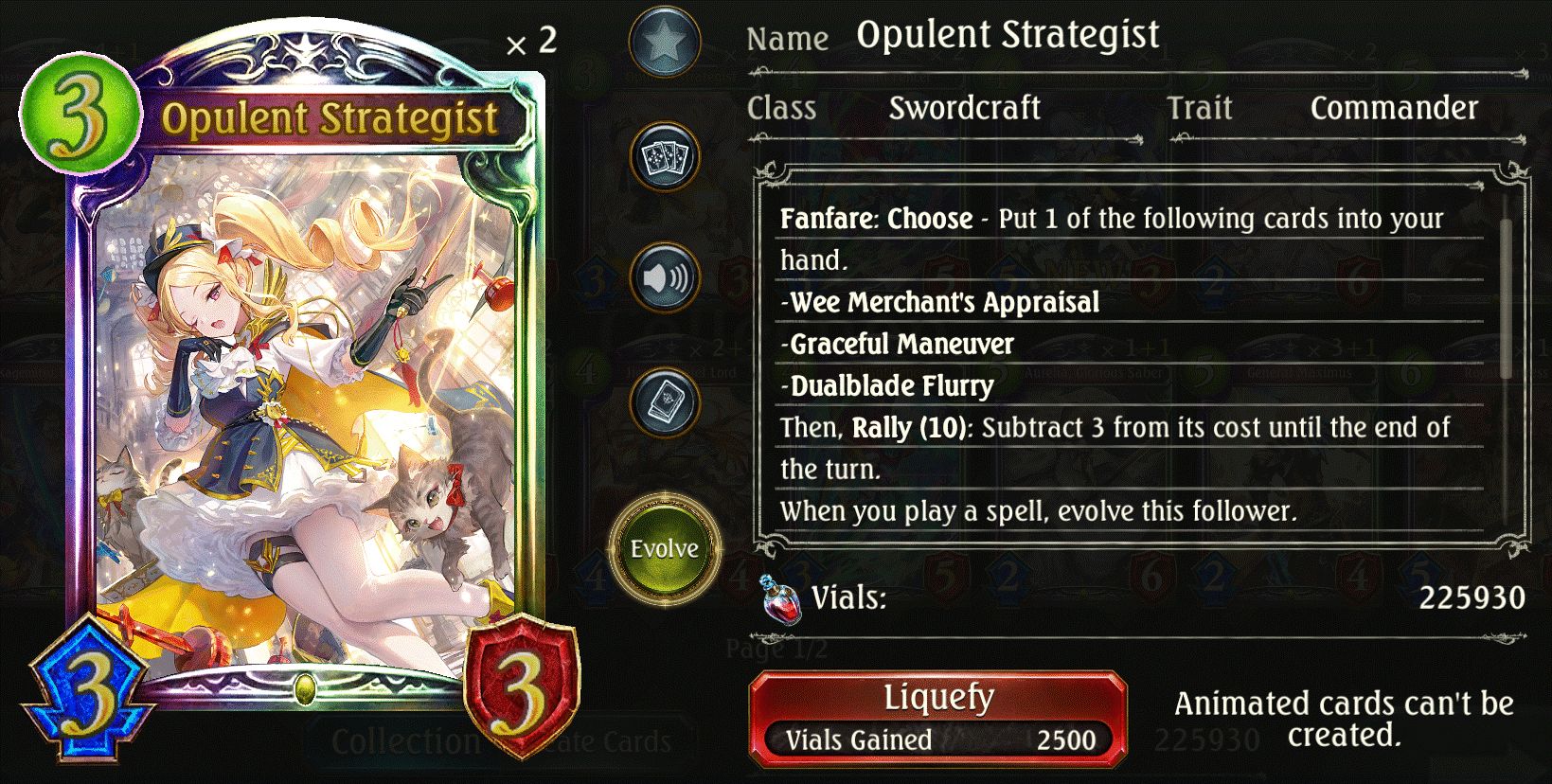
Runecraft
The class most closely associated with sorcery and magic. Aesthetically includes powerful witches and wizards, as well as alchemic creations.
Here are some of the historical concepts within the class:
- Spellboost. Cards which gain additional effects or have their cost reduced each time you cast a Spell. In the unlimited format, the ultimate spellboost card is Dimension Shift, a spell which can skip your opponent’s next turn!
- Earth Rite: Some cards will generate Earth Sigils onto your board, which can then be consumed by cards with Earth Rite effects to unleash powerful effects.
- Board based strategies: Every once in a while, a board based Rune Strategy, such as Test Subject Rune (led by the Depraved Convict, Sephie) subverts the typical expectations of the Runecraft class

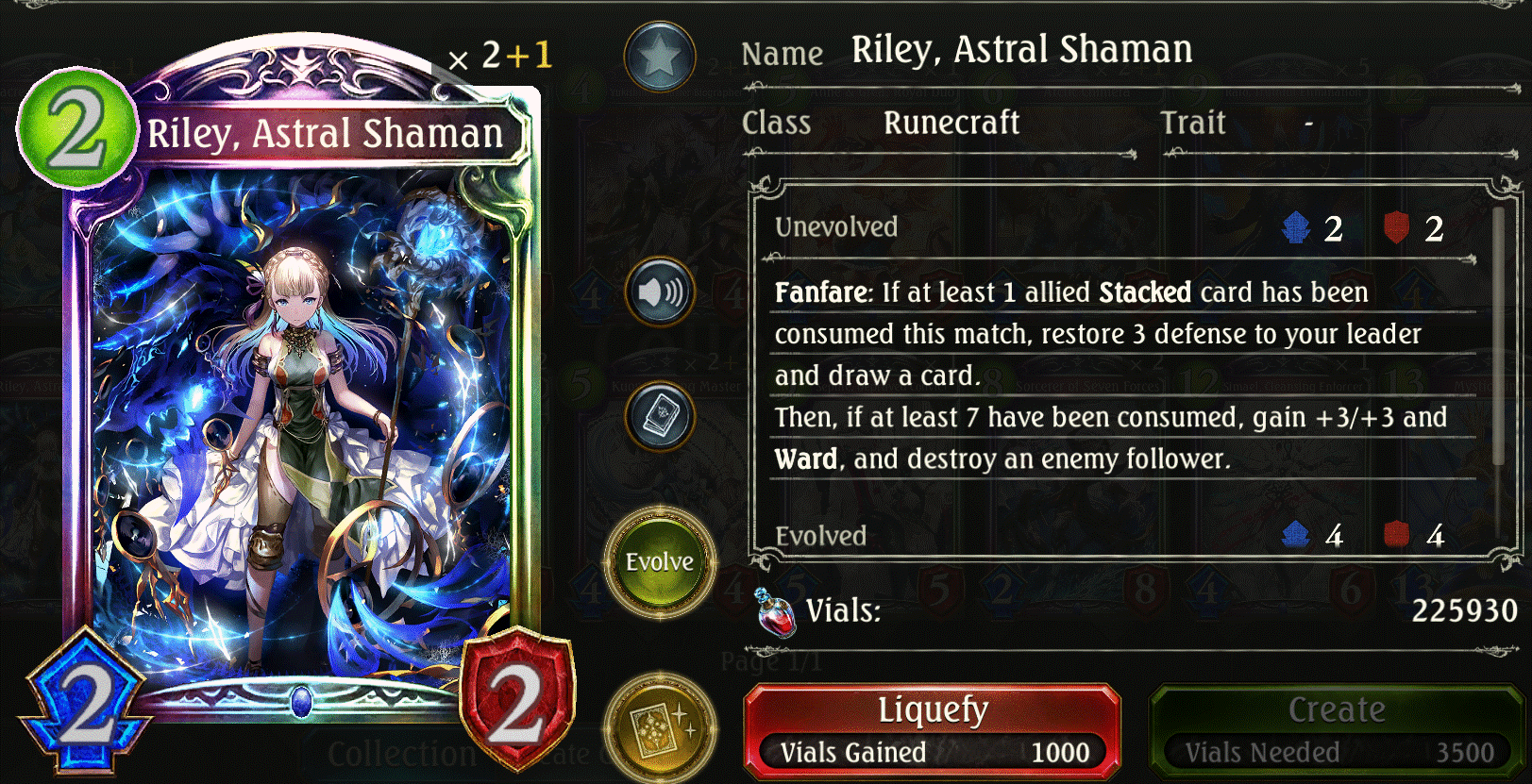
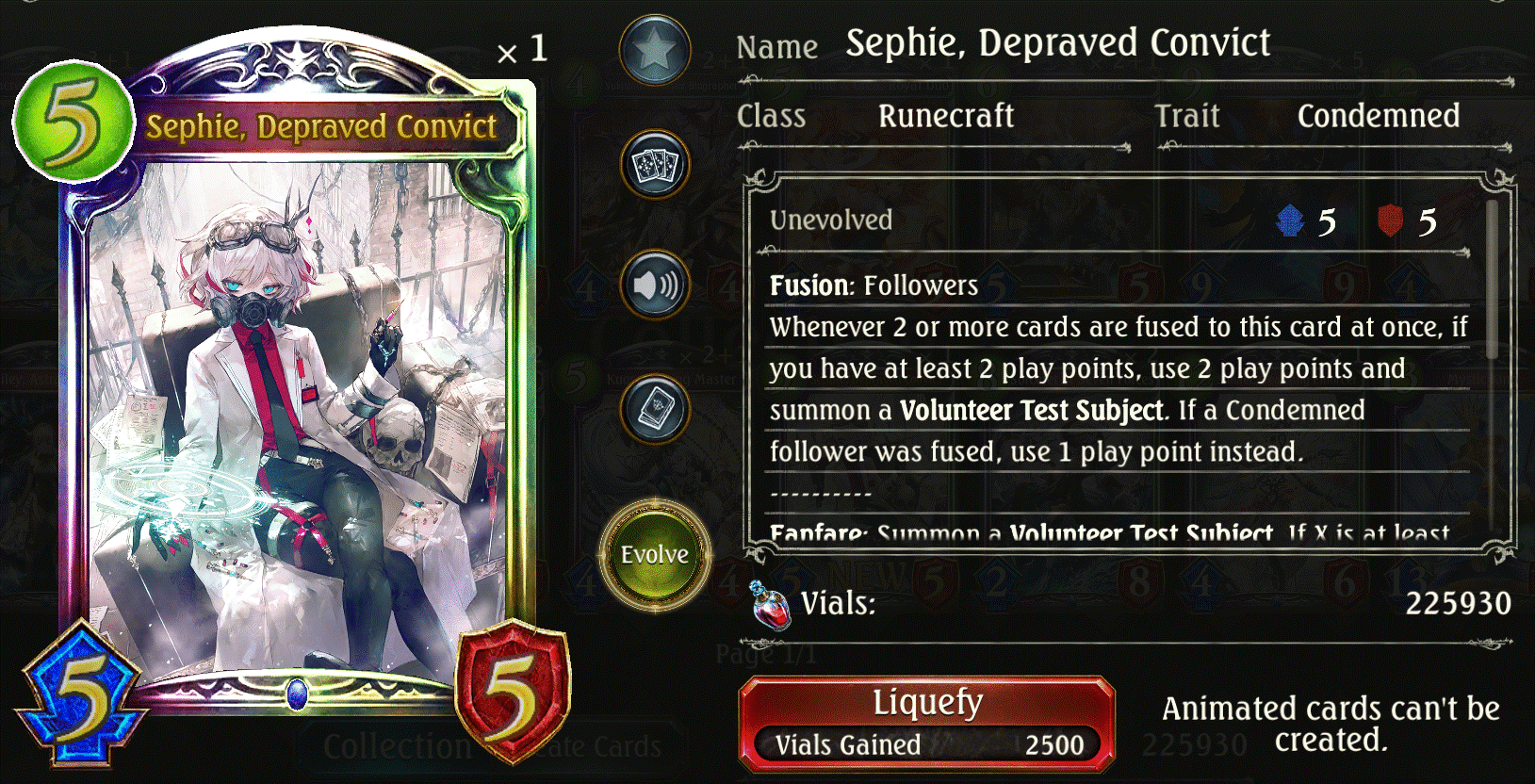
Dragoncraft
If you’ve watched the Shadowverse anime, you’ll know that this is the class of the main character! True to its name, a class that focuses around Dragons and, for some reason, aquatic marine life.
Here are some of the historical concepts within the class:
- Ramp: This is THE reason to play the class. Dragon features many cards that accelerate their play point gain, allowing them to play bigger and better followers faster than what would usually be possible.
- Big followers: Utilising ramp, this class is able to unleash powerful followers with board-wiping effects or direct storm damage that can attack the opponent leader directly
- Overflow: A common Dragoncraft mechanic where once you reach 7 play point orbs for the first time, your leader enters Overflow status. Certain cards will have bonus effects once you achieve this state.
- Aggro: While not always a viable archetype, Dragon has had a number of aggressive strategies that focuses on strong early game followers and strong storm finishers to close out their early advantages
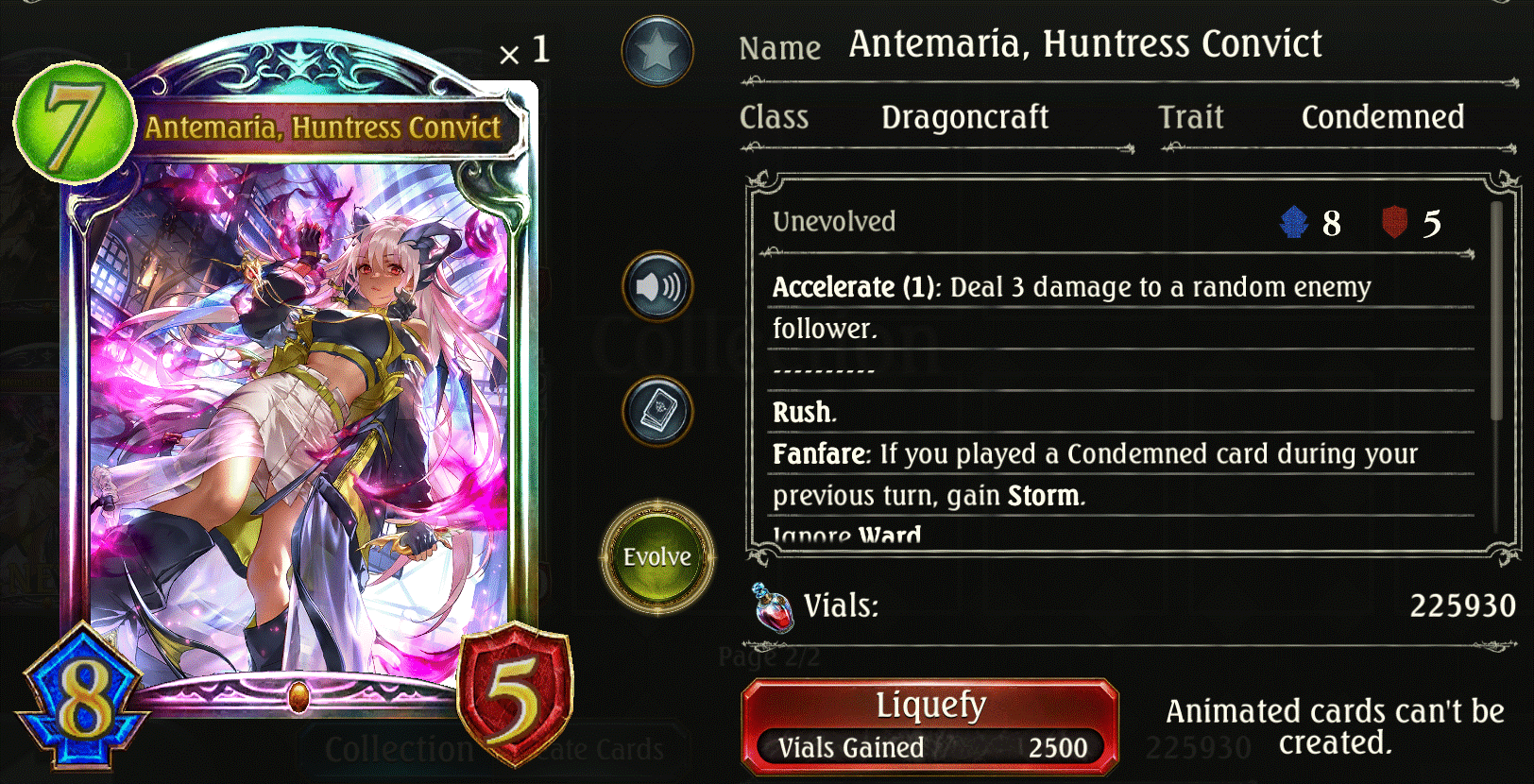
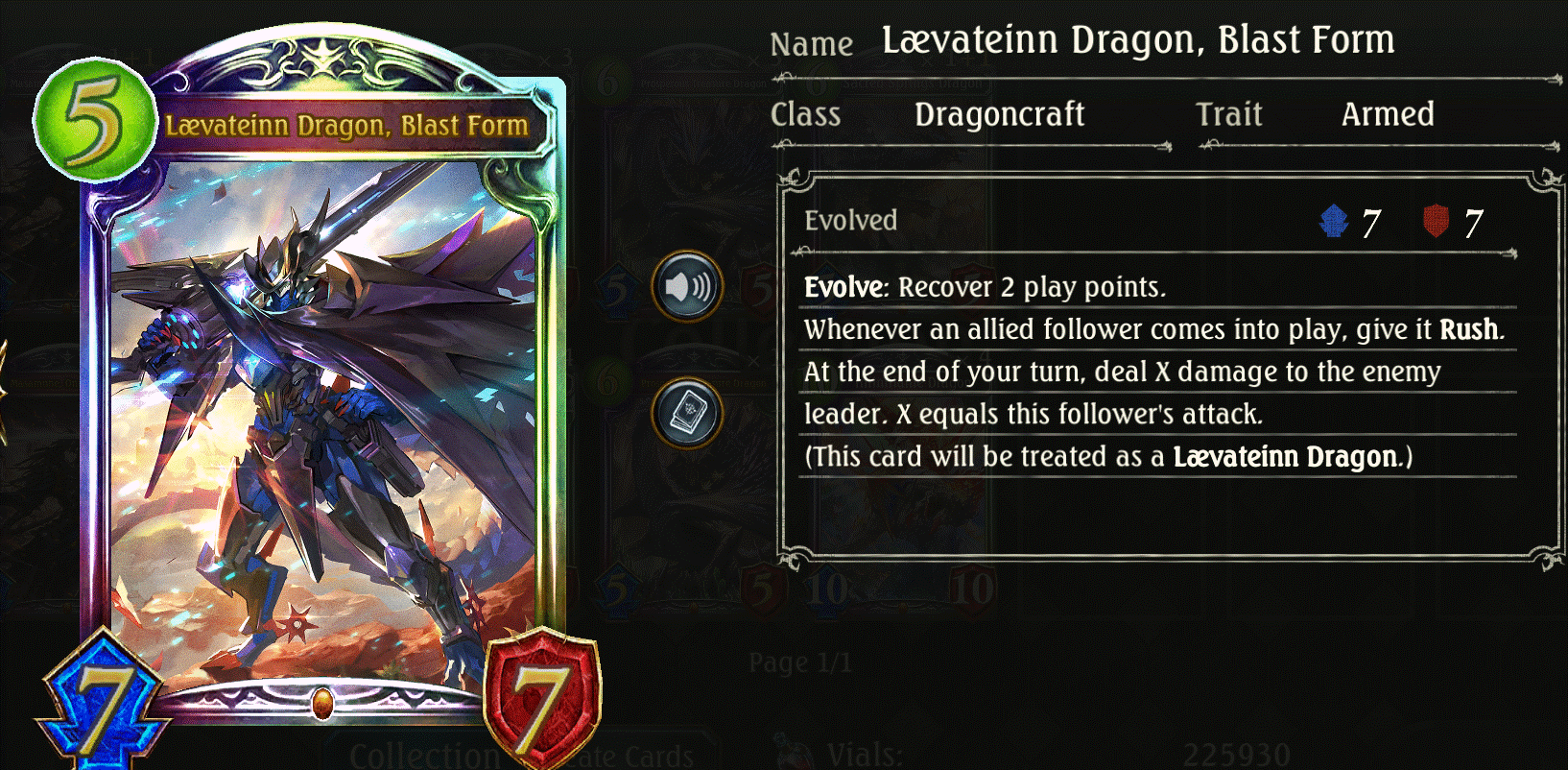

Shadowcraft
A class that focuses on necromancy and the occult. Expect ghosts, necromancers and the undead! The deck utilises the graveyard to formulate aggressive and control-type strategies alike.
Here are some of the historical concepts within the class:
- Necromancy: The core mechanic within Shadowcraft. As you play spells and have your followers destroyed, your Shadow count will increase. Once you have accumulated enough Shadows, play a card with Necromancy to consume the required Shadows and activate a powerful effect!
- Reanimate: The ability to bring back an allied follower that was destroyed earlier in the game.
- Burial rite: An ability to send a card in your hand onto the field and then immediately destroy it (without activating its effects). This can be used to set-up Reanimate effects later in the game
- Last words: Many Shadow followers have effects that will activate upon leaving the field. There have been some archetypes where cards gain additional effects based on the number of last word followers destroyed previously
- Ghosts: A special type of follower which can be summoned by the effects of other cards. It is a 1/1 Storm follower that banishes itself at the end of the turn.

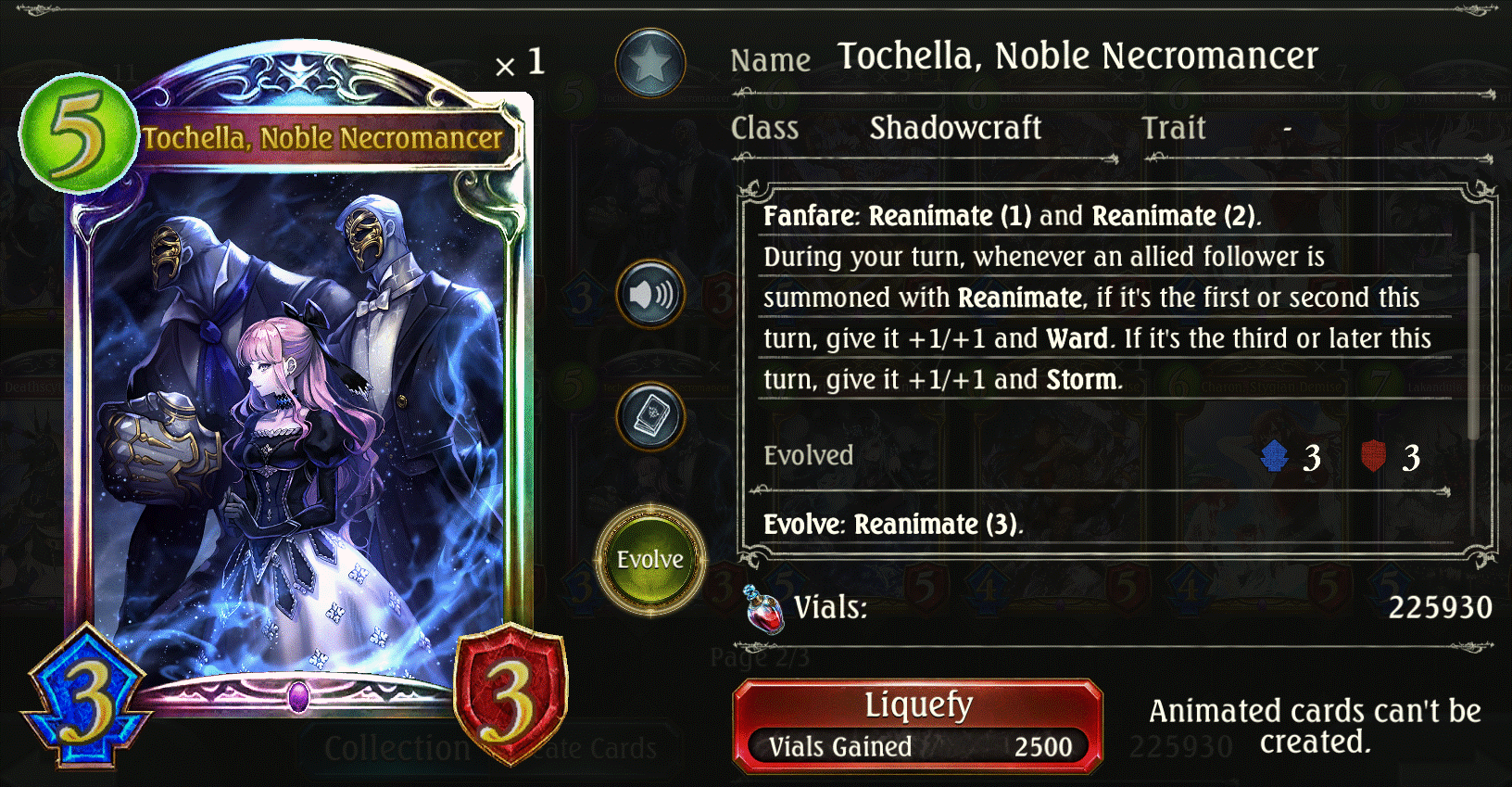

Bloodcraft
A class that utilises self-damage effects to enhance its class cards. Bloodcraft has a heavy aesthetic focus on vampires and demons.
Here are some of the historical concepts within the class:
- Avarice: Avarice is active when at least two cards have been added to your hand from your deck in a turn. Some cards have special effects with the Avarice condition
- Vengeance: One of the most classic identities of the class. Whenever the Bloodcraft player is below 10hp, some of their followers will gain powerful Vengeance effects which can turn the tide of battle immediately in their favour. Oftentimes a high-risk, high return proposition.
- Wrath: A condition which activates once the Bloodcraft player has self-damaged their leader on 7 separate instances within the game. Many cards gain powerful effects once this condition is active.
- Life control: Despite being a class that damages itself quite frequently, once its Vengeance and Wrath effects are active, several of its cards gain powerful effects which allow the Bloodcraft player to recover their health quickly and efficiently
- Aggro: Blood has historically had a number of strong aggressive archetypes which race the opponent’s life total down as fast as possible. One such example would be handless blood
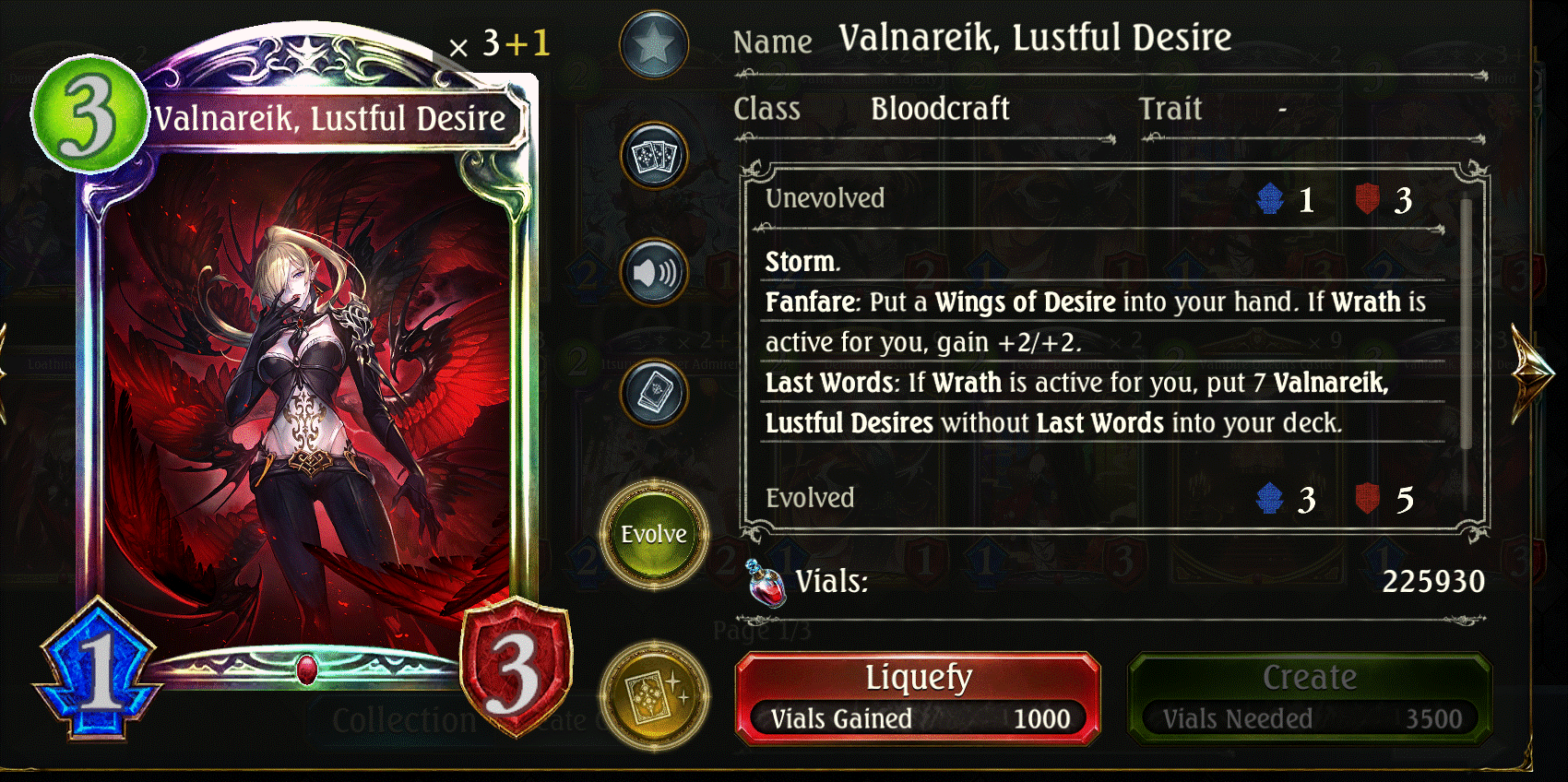
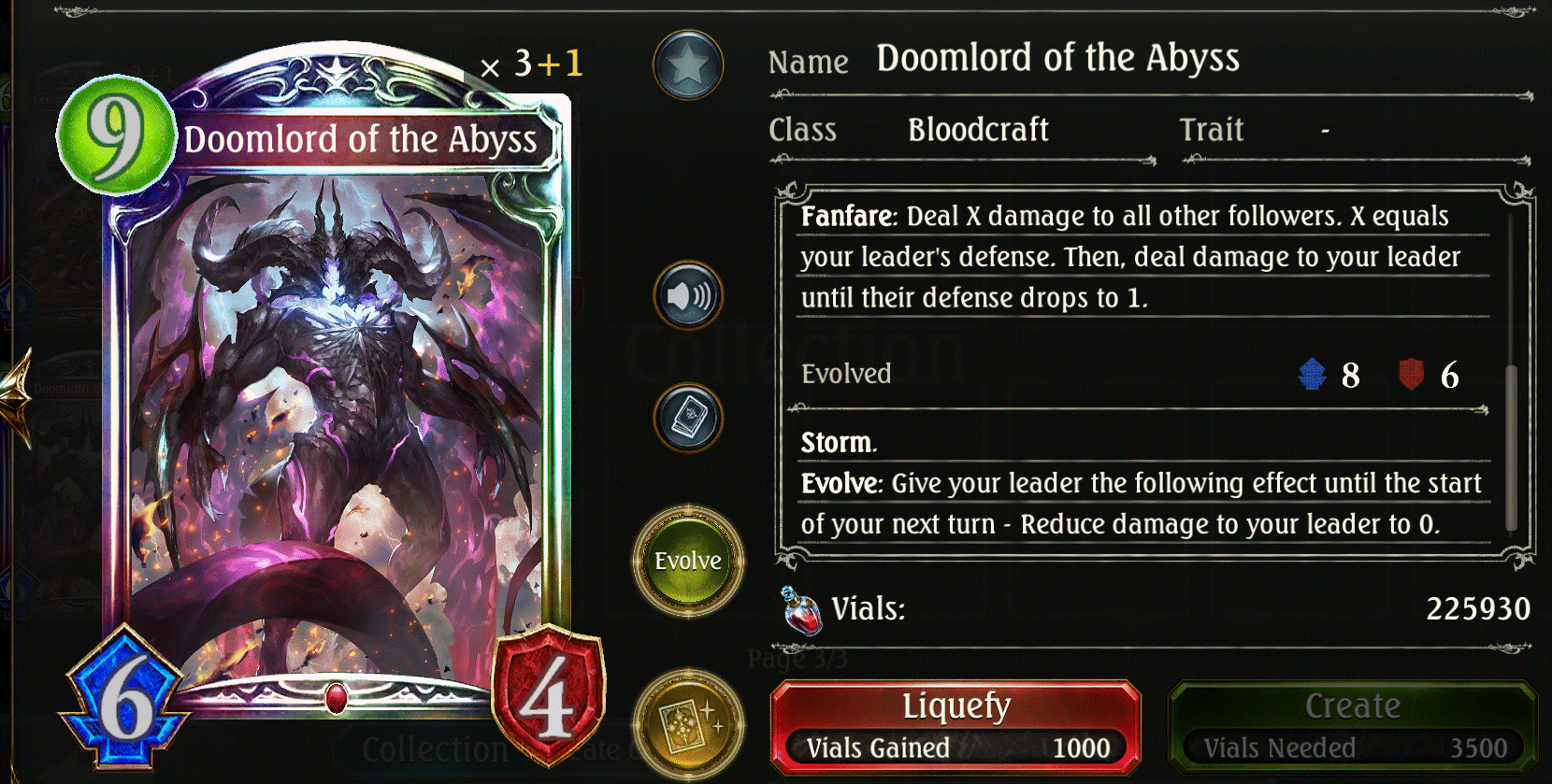
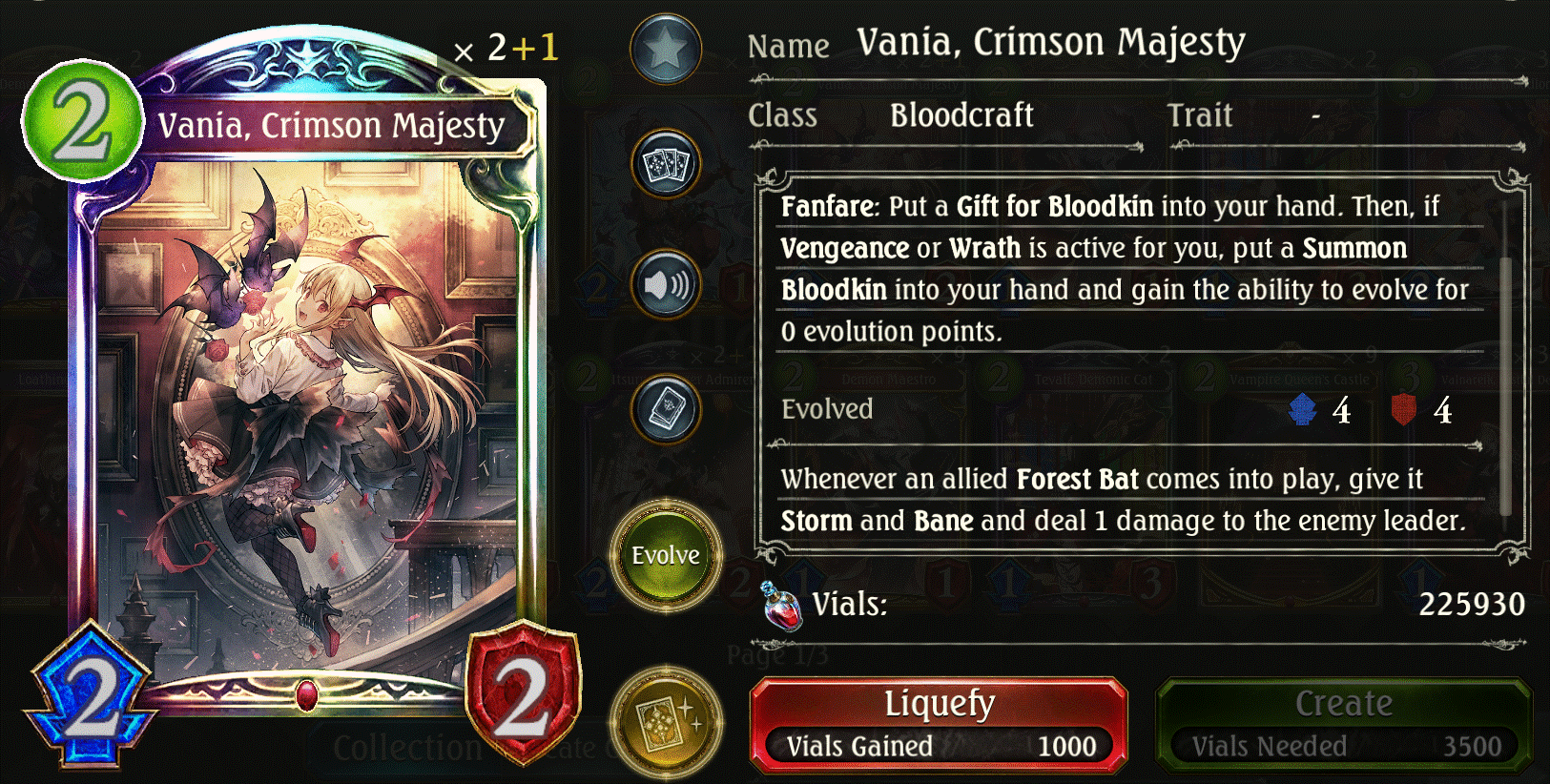
Havencraft
Shadowverse’s take on both the holy and more… heretical side of religious worship. A class that typically takes its time to set-up before fully taking control of the game state.
Here are some of the historical concepts within the class:
- Countdown amulets: Amulets will “count down” at the start of each turn, often unleashing a powerful effect or unleashing a fearsome follower upon reaching zero.
- Crystallize: The follower equivalent of countdown. Some cards gain bonus effects upon playing a certain number of other Crystallize effects first
- Heal: A control playstyle that focuses on healing extensively and answering the opponent’s threats on board, before closing out the game with an inevitable win condition.
- Ward: A mid-range archetype that runs a large number of ward followers which gain special abilities once a certain number of other ward followers have been destroyed first


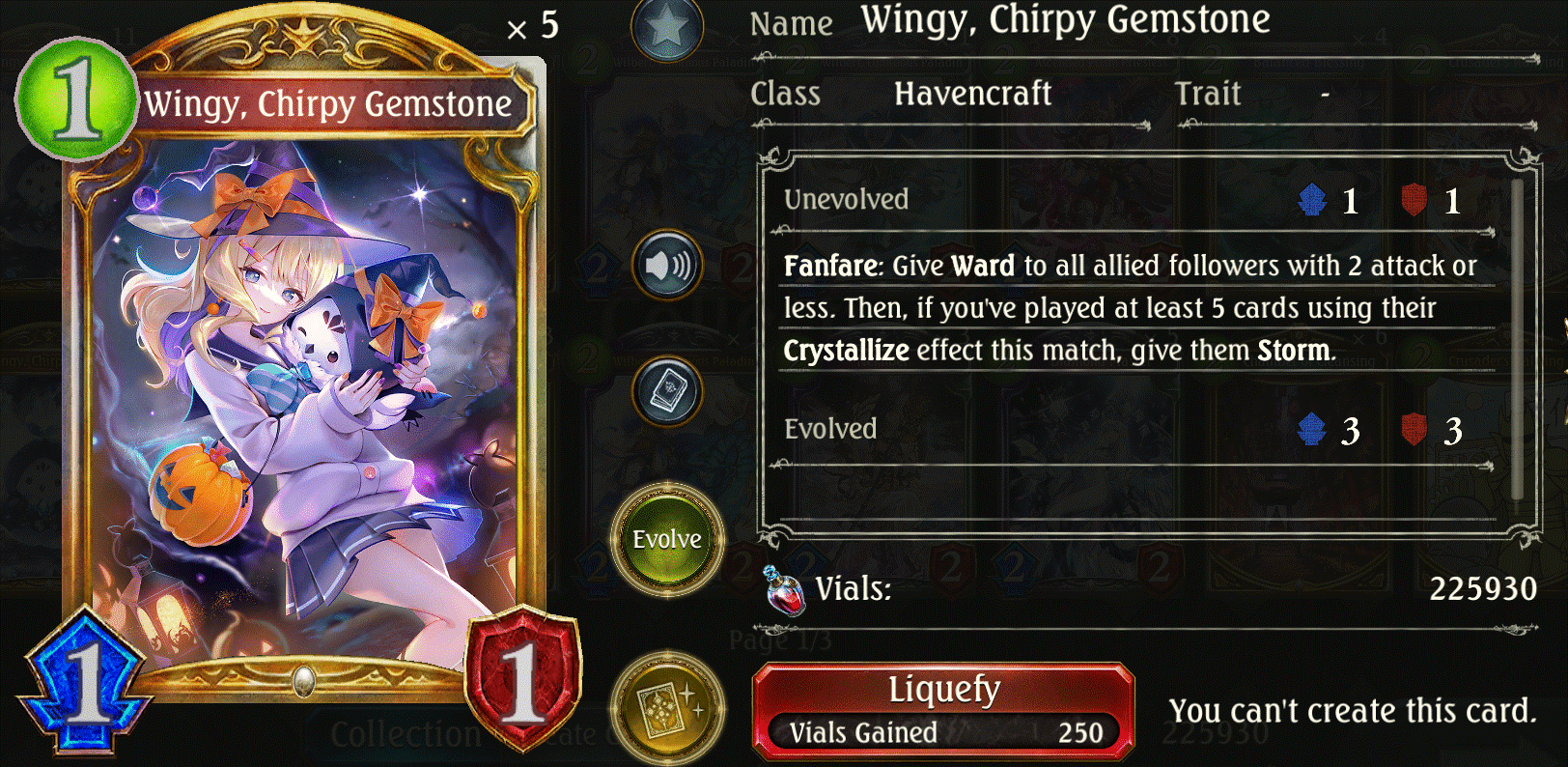
Portalcraft
A futuristic class that focuses on high-tech machinery and string-wielding manipulation of puppeteers.
Here are some of the historical concepts within the class:
- Puppets: Puppets are a special type of follower that cost 0 play points, has rush (can attack other followers on the same turn it’s played) and have a 1/1 statline. They can be utilised to control the board, enabling both aggressive and control-based strategies alike. There is also a one cost “enhanced puppet” which shares similar traits but is 3/3 instead.
- Number of other destroyed followers: Portalcraft has a number of cards that gain bonus effects based on number of destroyed followers (or rally) which is easily achieved due the ability to generate puppets and other low cost followers.
- Artifacts: Typically a high apm, combo-heavy deck which utilises a toolbox of artifact generators to answer a variety of different situations. Some iterations of Artifact include a six different artifacts destroyed condition which unlocks their true power. Often involves flashy one turn kills
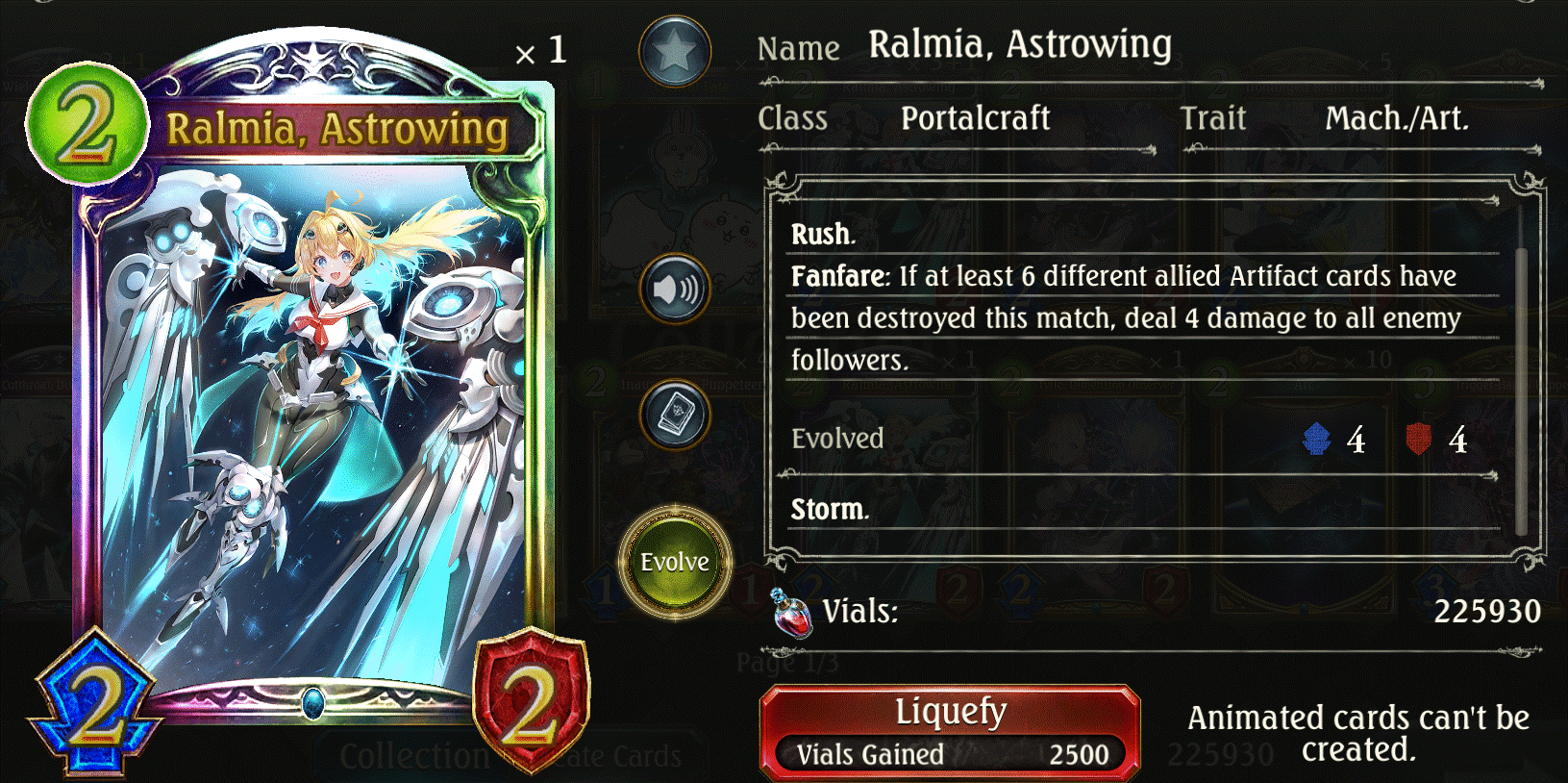
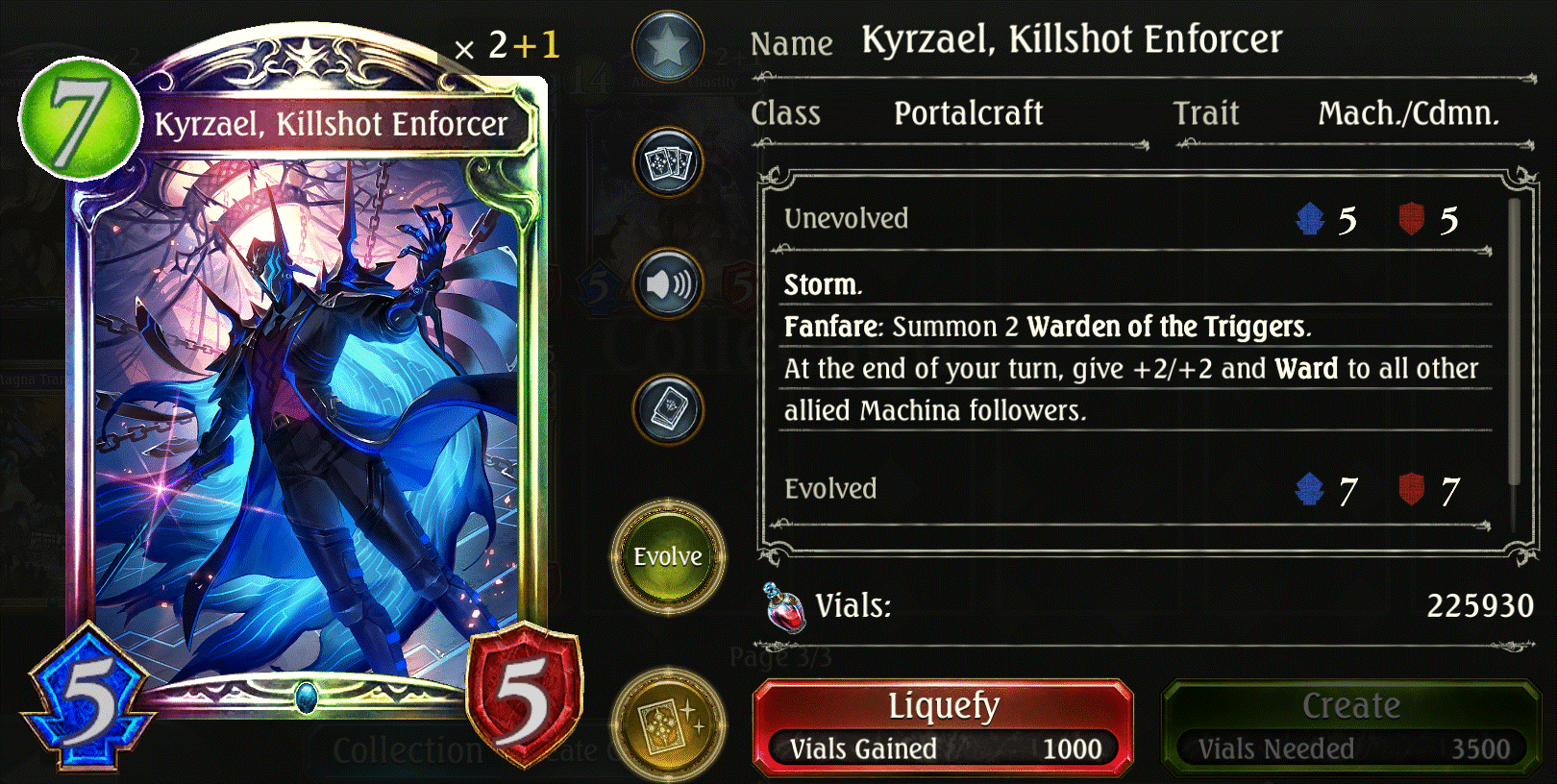
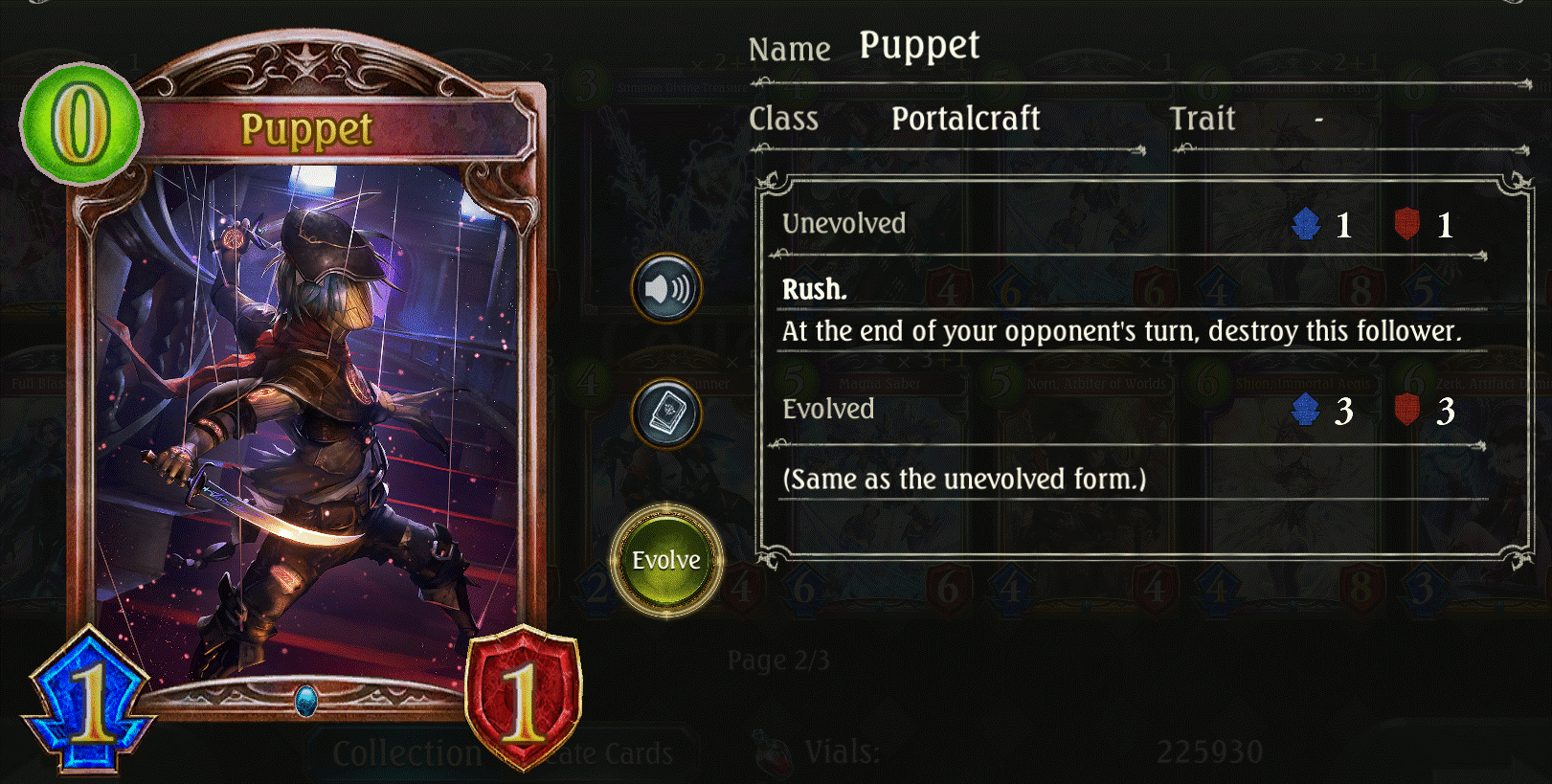
Exploring The Arena - Take Two And Open Six
Take Two and Open Six are draft game modes where you can pay for entry with either Rupies, Crystals or Challenge Tickets (given away for free by Cygames just by playing the game regularly).
Take Two
Once you enter, you will be asked to choose from three different classes. Feel free to pick whichever class you feel you will do the best on.

Once you have selected your leader, you will be taken into the drafting screen. Here you will be presented with a choice between two different pairs of cards. These cards will enter your deck. You repeat this process 15 times until you have a 30 card deck.
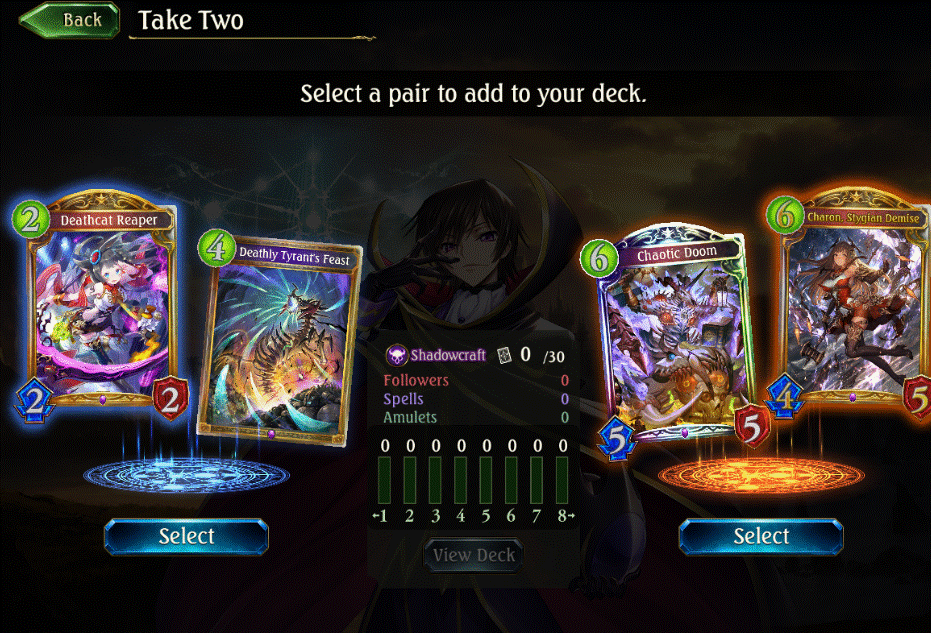
Once you have finished selecting your deck, you will be taken to the main lobby. Here you can play up to 5 matches, with increased rewards for each victory you are able to achieve. You can look at your deck on this screen at any time, as well as quit the run if you just aren’t feeling the deck you’ve drafted.
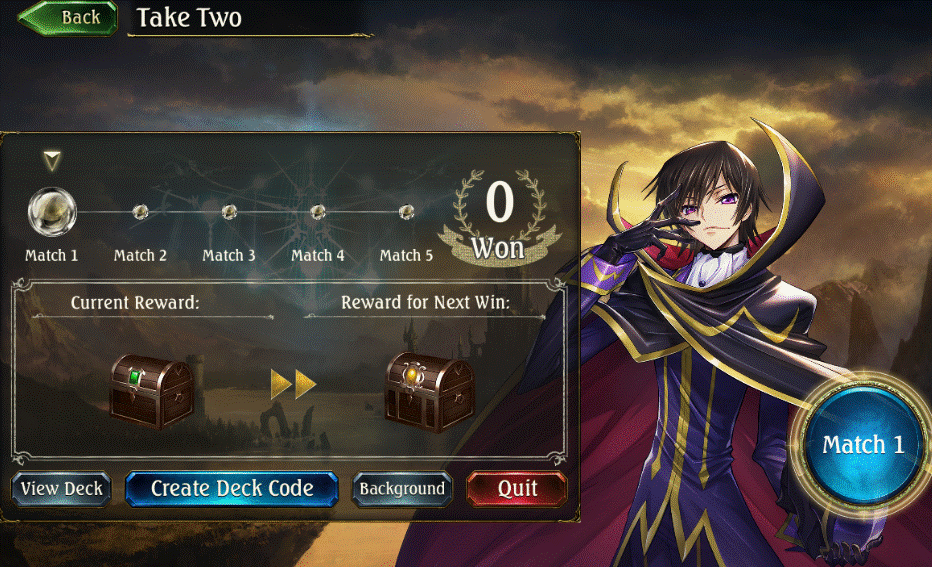
Take 2 is a fairly challenging game mode as it tests a number of different skills. Generally speaking, new players will struggle to achieve good results immediately, but like many things in life, practice makes perfect. Consider it an investment of your time and eventually you will see a return on your efforts.
That said, we recommend that you familiarise yourself with the Rotation format first before jumping into Take Two. That way, you will have a much better feel of which cards are strong to draft and able to navigate complex game states more intuitively.
Aside from that, here are our general tips for Take Two:
- Draft at least five to eight cards that can be played on turn 2 (usually this means 2-cost followers). Not only is playing followers in the early game very important for most decks, but they add flexibility to your future turns
- Try to draft at least a few cards that can draw you additional cards. This means you are less likely to run out of gas in the late game, and improves the probabiltiy of drawing your strongest cards
- Flexible cards tend to carry a premium. This means cards with Enhance, Accelerate or are otherwise easy to play.
- While drafting, assess the cards you’ve already drafted an what gaps you might need to fill. If there is a strategy your cards are pushing you towards, it may change the way you evaluate what to pick.
- After drafting, make a mental note of how your deck will operate and how you might need to mulligan and play the game. For example, if you have drafted a fairly weak deck, you may want to play very aggressively to end the game before your opponent has a chance to draw their power cards
- Think carefully about how you manage your resources. This includes your evolution points, usage of your power picks and how you manage the board state
- Think about what your opponent is capable of doing. You might not know what he drafted exactly, but you know what he “could” have drafted
Open Six
Similar to Take Two, Open Six gives you a choice of three classes to pick from. Unlike in Take Two, you get to see two of the cards that will be available during your run. In some cases, knowing that a certain power card is guaranteed will swing the draft heavily in that class’s favour. For example, if Shadowcraft had shown a power pick such as “Masquerade Ghost”, it would be the clear favourite.

At its core, Open 6 opens cards 5 packs from the latest sets and a Phantom Card Pack. Any card you open in your 5 normal packs belong to you. However, to acquire one of the gold or legendary cards in the Phantom Card Pack, you will need to win 4 matches or more.
Once you’ve selected your class and opened your packs, you will then have the opportunity to build and adjust your deck. We recommend that you build a 30 card deck, as it maximises your chances of hitting your power cards and intended synergies.
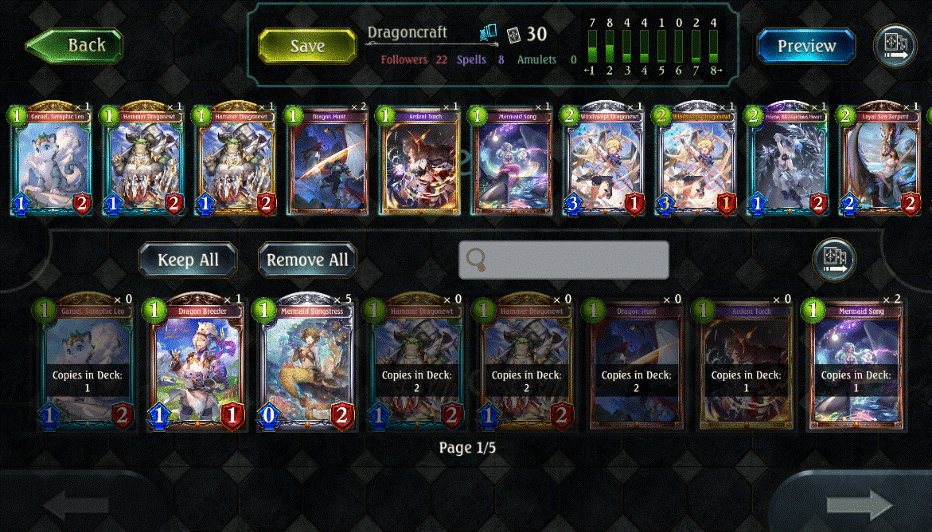
After that, you play up to a total of five games and earn rewards based on how many you win. At five wins, you will be able to add one of the phantom legends into your collection.
Overall, most of the tips and tricks in Take Two apply to Open Six. However, the power level of Open Six decks tend to be stronger than that of Take Two so try not to be taken off guard.
Rotation Or Unlimited?
Rotation
Rotation is the standard and most popular format in Shadowverse. The usable cards include the basic set and the latest five expansions. Each time a new expansion is released, the oldest expansion “rotates out”, meaning that the cards within that expansion can no longer be used in rotation. This keeps the game fresh and constantly evolving (forgive the pun).
A majority of major tournaments across the world are set in the Rotation format, as are many of the in-game events.
For a new player, Rotation’s smaller card pool makes it easier to learn the game, and the decks tend to be much slower and more forgiving than in unlimited. However, the constantly shifting metagame can be difficult to keep up with as a completely new player, mainly due to the difficulty in amassing resources early on. This is why we recommend maining a class for your first three months of play, before gradually expanding your horizons.
Unlimited
Unlimited is in many ways the wild west of Shadowverse. As the card pool includes all expansions within the game, many powerful synergies exist within Unlimited that do not exist within Rotation.
Some of the matches can be decided within the first four turns, which makes it ideal for someone who wants to play fast, impactful matches.
Unlimited decks tend to be much cheaper than Rotation decks and require less resources to maintain. However, in-game events and tournaments are significantly less frequent than its Rotation counterpart.
For some players, they may find it easier to build a cheap deck within Unlimited to do their daily missions before shifting to Rotation. In our opinion, this method is not necessary, and Rotation can be a perfectly good place to start.
Improving At The Game
We generally take the approach that practice makes perfect. Start with the Story Mode to familiarise yourself with the game mechanics before slowly transitioning to multiplayer.
When you find yourself needing a deck to compete, checking out our Tier List and Win Streaks section will give you a good indication of what decks are strong in the current meta.
Keep in mind that a level of personal judgment is advised when crafting decks. Like any card game, the strongest decks can change with the release of new cards and more importantly, when sets rotate out of rotation. If you are tight on vials and rupies, we recommend that you only craft expensive decks if you feel committed to that class. It can also be worthwhile checking which cards rotate out in the next set. If key cards within the deck you are considering are going rotate out, it means that its remaining lifespan will likely be fairly short.
Frequently Asked Questions
What Packs Should I Prioritise?
Generally speaking, the newer the expansion, the better the value you will get in the long-term. That said, we recommend pulling from each of the sets within Rotation until you reach the critical breakpoint where you have a majority of the commonly played Bronze and Silver rarity cards within the sets first. The reason for doing this is to reduce the burden on your vials, as a playset of silvers and bronzes can be easily acquired without a significant pack investment. Afterwards, you will want to apply a similar methodology for golds and legendaries (significantly deprioritising the expansion that is closest to rotating out though).
How Do I Acquire New Leaders?
You might have noticed that some players use leader skins that are different from the default. These are purely cosmetic changes and they can be acquired through in-game promotions, purchased in the shop (most are crystal exclusive) or pulled from a pack. Note that only the special alternate art version of the leader card will provide the leader, and it cannot be crafted with vials.
How Often Are Expansions And Mini Expansions Released?
Typically every three months a new expansion will be released. Mini expansions are often released on the third month of the expansion.
What Do The +1s Next To Cards In My Collection Mean?
These are the temporary cards you have acquired. Temporary cards can be used in your deck until they expire (it is possible for some of these cards to have no expiry date). These cards cannot be disenchanted for vials.
What Are Grand Prixes? Should I Play Them?
Grand Prixes are special events which can earn you special cosmetics, rupies and pack tickets. Each day of the event, you will get one free entry. Even if you are unable to win a single match, you will still get 30 rupies for participating. In fact, you don’t even have to play a single game, you can just quit the run and collect 30 rupies a day.
That said, if you are up for the challenge, winning four times in any given run will qualify you to Group A, eventually culminating in an opportunity to fight for a special flair.
Should I Liquefy Cards From Classes I Don’t Intend To Play?
Although there are many players that main specific classes, part of the fun in the long term is to experiment with every class. We typically recommend not vialing away cards unless you have a good reason to.
I Can’t Complete My Daily Missions Easily, What Should I Do?
It is possible to temporarily switch to Solo Missions instead. This gives weaker rewards, but it will give you peace of mind until your collection is ready to switch back to Multiplayer rewards.
What Are Prebuilt Decks? Which Should I Get?
Each expansion, Cygames usually provides one free ticket to purchase a prebuilt deck in the shop. These prebuilt decks come with a solid lineup of Legendaries and Golds, which can help you build a competitive deck for Rotation format. Note that the cards from these prebuilts are temporary and will disappear at the start of the next expansion. That said, Cygames will then give you another prebuilt ticket to purchase a prebuilt deck for the next expansion instead!
We highly recommend picking your first rotation deck from the Prebuilt deck in the shop. For example, the Crystallize Haven prebuilt deck in Celestial Dragonblade is playable right outside the box and subsidises the total cost of the competitive version of the deck by over 21000 vials! For the Azvaldt trial decks, core cards for the Condemned Portalcraft, Last Word Shadow and Loot Sword decks are also provided at a significant subsidy.
I’ve Read The Guide, Now What?
The rest of the journey is in your hands. The greatest way to learn is simply by playing more Shadowverse. That said, feel free to join our discord channel and keep up with our content for an up-to-date view of the strongest decks!
In the words of the wise Hiro Ryūgasaki, Shadowverse is really fun!
